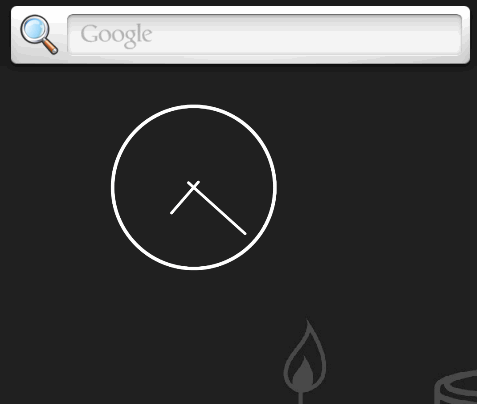react-native-android-tablayout v0.3.0
React Native Android TabLayout native component
A React-Native (0.19+) wrapper for the standalone Android TabLayout component. It's fully native and similar in use like the TabBarIOS component.

Example Project
You can find an example project in a separate repo.
Installation
Install module with NPM:
npm install --save react-native-android-tablayoutIf you haven't installed RNPM, run:
npm install -g rnpmAfter RNPM is installed:
rnpm link react-native-android-tablayoutIf you want to setup the project manually, see the manual install guide.
After setting up your project, run react-native run-android from the root to see if there are no compilation failures.
Usage
Make sure to import the Tab and TabLayout component in your script:
import { Tab, TabLayout } from 'react-native-android-tablayout';Then, create a tab layout as follows:
export default class MyComponent extends Component {
render() {
return (
<View>
<TabLayout>
<Tab name="Tab 1"/>
<Tab name="Tab 2"/>
<Tab name="Tab 3"/>
</TabLayout>
</View>
);
}
}The TabLayout and Tab accept the following properties:
TabLayout
| Prop | Type | Explanation |
|---|---|---|
| selectedTab | number | Use for selecting the initial tab and/or connecting to state. See the StatefulTabLayout example. |
| selectedTabIndicatorColor | string | Color of indicator line. Specify in CSS color format. |
| tabGravity | string | Set tab gravity. Default 'fill', use 'center' when tabstrip needs to be centered. |
| tabMode | string | Set tab mode. Default 'fixed', use 'scrollable' when tabstrip needs to scroll. |
| onTabSelected | func | Provide callback function with e:Event as argument. When called, the selected tab position is found in e.nativeEvent.position (0-based). See the StatefulTabLayout example. |
Tab
| Prop | Type | Explanation |
|---|---|---|
| name | string | Tab name. |
| iconResId | string | Icon resource ID. Points to a drawable, see the IconsOnTopTabLayout example. |
| iconPackage | string | Icon resource package. If not provided, defaults to current package. Use 'android' for built-in icons. See the IconsOnTopTabLayout example. |
| iconUri | string | Icon URI. Only allows file:// URIs. See how to combine with react-native-vector-icons in the IconsOnTopTabLayout example. |
| iconSize | number | Icon size. |
| textColor | string | Text color. Specify in CSS color format. |
| onTabSelected | func | Provide callback function with e:Event as argument. Called on the tab that was selected. When called, the selected tab position is found in e.nativeEvent.position (0-based). See the StatefulTabLayout example. |
| accessibilityLabel | string | Accessibility label for tab. Tabs are already set as accessible. |
Usage of these properties can be seen by example in the example repo.
Custom views
Since v0.2, you can define a custom view for a tab by adding child components to a Tab element:
export default class MyComponent extends Component {
render() {
return (
<View>
<TabLayout>
<Tab style={{width: 110, height: 48}}>
<Text>Tab 1</Text>
<Text>Hey, multiline!</Text>
</Tab>
<Tab style={{width: 110, height: 48}}>
<Image source={require('./image/tabImage.png')}/>
</Tab>
<Tab style={{width: 110, height: 48}}>
<Icon name="user"/>
</Tab>
</TabLayout>
</View>
);
}
}You need to specify the width and height of the tab contents, else no contents will show up. This might be improved in the future.
See the CustomViewTabLayout example for a working example.
Todo
- add/remove tabs not implemented
- custom views need a width and height to work
PRs are welcome!
10 years ago
10 years ago
10 years ago
10 years ago
10 years ago
10 years ago
10 years ago
10 years ago
10 years ago
10 years ago
10 years ago
10 years ago
10 years ago
10 years ago
10 years ago
10 years ago
10 years ago
10 years ago
10 years ago